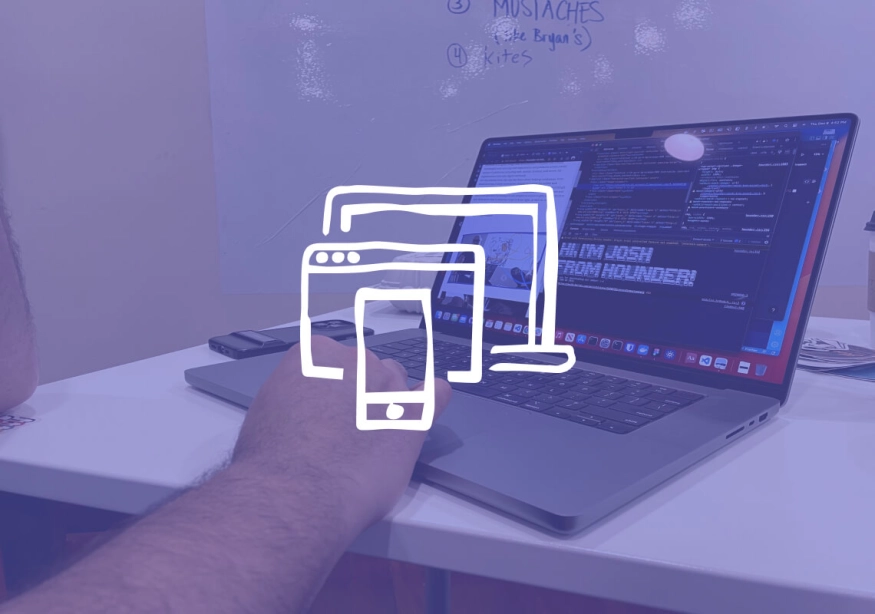Pixel-perfect design is a crucial aspect of creating visually stunning and highly functional digital interfaces. It requires meticulous attention to detail, a deep understanding of design principles, and the use of specific tools and techniques. In this comprehensive guide, we will explore the concept of pixel-perfect design, its importance in the design process, the essential tools you need to master, the principles to follow, and the steps to achieve pixel-perfect design. We will also discuss some common challenges you may encounter and provide strategies to overcome them.
Understanding Pixel-Perfect Design
Pixel-perfect design refers to the meticulous crafting of digital interfaces (UI) where each element aligns perfectly with the underlying grid and renders without any imperfections. It involves ensuring that every pixel is in its right place and that the overall design is visually cohesive and consistent.
Pixel-perfect design is not just about precision; it is also about creating a seamless visual experience for users. When every pixel is carefully placed, it can lead to a more polished and professional look for your website or application. This level of attention to detail can help build trust with your audience and convey a sense of quality and reliability.
The Concept of Pixel-Perfect Design
The concept of pixel-perfect design revolves around achieving precision and consistency in your digital designs. In other words, perfect design fidelity for quality UI. It means ensuring that your designs appear as intended, regardless of the screen resolution or device they are viewed on. By paying close attention to every detail, you can create visually pleasing designs that enhance the user experience.
Implementing pixel-perfect design requires a keen eye for detail and a deep understanding of design principles. It involves working with grids, spacing, typography, and color schemes to create a harmonious visual composition. Designers often use tools like grid systems and pixel rulers to ensure that every element aligns perfectly and contributes to the overall aesthetic appeal of the interface.
The Importance of perfect design fidelity
Pixel-perfect design is crucial because it helps create a visually appealing and professional interface. When design elements are aligned perfectly, they contribute to a sense of harmony and balance in the overall layout. This attention to detail also enhances usability, as users can easily navigate and interact with the interface.
Furthermore, pixel-perfect design plays a significant role in branding and marketing efforts. Consistent and well-crafted visual elements across digital platforms can help reinforce brand identity and make a lasting impression on users. Whether it's a logo, icon, or button, maintaining pixel-perfect precision can elevate the overall look and feel of a brand's online presence.
Essential Tools for Pixel-Perfect Design
There are several tools that you can leverage to achieve pixel-perfect design:
Design Software for Precision
Design software such as Adobe Photoshop and Sketch allows you to work at a pixel level, making it easier to create precise designs. These tools provide features like grids, guides, and rulers that enable you to align and position elements accurately.
Furthermore, design software often includes advanced features like layer styles, blending modes, and smart objects that enhance the overall quality and detail of your designs. These tools empower designers to create intricate effects and manipulate elements with precision, contributing to the pixel-perfect aesthetic.
Utilizing Grid Systems
Grid systems are powerful tools for achieving pixel-perfect design. By defining a grid, you can ensure that your design elements align with the underlying structure, creating a harmonious and consistent layout. Grid systems also help maintain proportions and balance in your designs.
Moreover, grid systems promote scalability and responsiveness in design projects, ensuring that layouts adapt seamlessly across various screen sizes and devices. By adhering to a grid system, designers can establish a solid foundation for their designs, facilitating a structured and organized approach to pixel-perfect design.
Principles for Success
When striving for pixel-perfect design, there are some essential principles to keep in mind:
Attention to Detail
Pixel-perfect design requires a keen eye for detail. Pay attention to every pixel, making sure that each element is aligned precisely and rendered without any flaws. This attention to detail contributes to the overall quality and professionalism of your design.
Consistency in Design
Consistency is key in pixel-perfect design. Ensure that your design elements, such as colors, typography, and spacing, remain consistent throughout the interface. Consistency not only enhances the visual appeal but also promotes a seamless user experience.
The Role of Colors and Typography
Colors and typography play a crucial role in pixel-perfect design. Choose a visually pleasing color palette and ensure that the typography is legible and appropriately sized. Consistency in color and typography helps create a cohesive and engaging design.
Steps to Achieve Pixel-Perfect Design
To achieve pixel-perfect design, follow these steps:
Starting with a Clear Vision
Before diving into the design process, establish a clear vision for your project. Understand the target audience, project goals, and desired look and feel. This clarity will guide your design decisions and ensure that you focus on achieving pixel-perfect results.
Sketching and Wireframing
Start by sketching and wireframing your design ideas. This phase allows you to explore different concepts and layout options without investing too much time. It helps you define the overall structure and helps identify potential alignment and spacing issues.
Refining and Testing Your Design
Once you have a solid wireframe, translate it into a high-fidelity design. Pay attention to alignment, sizing, and spacing, ensuring that each element is pixel-perfect. Test your design across different screen resolutions and devices to ensure that it appears as intended.
Overcoming Challenges in Pixel-Perfect Design
Pixel-perfect design can come with its share of challenges. Here are some strategies to overcome them:
Dealing with Different Screen Resolutions
With the multitude of devices and screen resolutions available, designing for all possibilities can be challenging. To overcome this, consider using responsive design techniques and test your designs on various devices to ensure optimal rendering.
Managing Design Complexity
Complex designs can be overwhelming and challenging to keep pixel-perfect. Break down your design into smaller, manageable components and ensure that each element is aligned correctly. Use design systems and style guides to maintain consistency throughout.
By following these guidelines and dedicating time and effort to your design process, you can master pixel-perfect design. Remember, attention to detail and consistency are paramount. Utilize the right tools, follow design principles, and overcome challenges to create stunning and precise digital interfaces.


